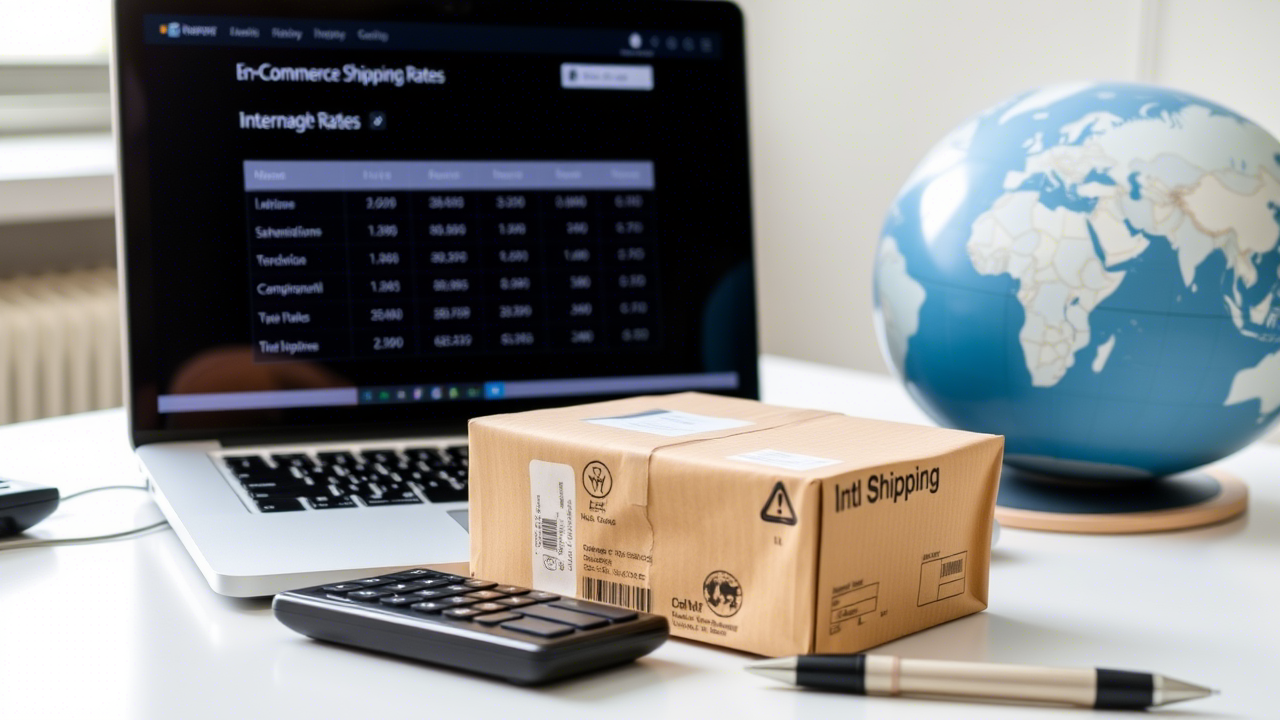Finding the Most Cost-Effective Way to Ship Internationally for Your E-Commerce Business
Expanding your eCommerce business internationally can unlock incredible growth opportunities, but international shipping costs can eat into your profits if not managed strategically. Whether you’re shipping to Canada, Europe, Asia, or other global destinations, understanding your options and implementing cost-saving strategies is crucial for maintaining healthy margins.
At Advanced International Freight (AIF), we partner with eCommerce businesses of all sizes to streamline cross-border shipping operations. In this guide, we’ll explore the most affordable international shipping options, compare top carriers like USPS, UPS, and FedEx, and share expert tips to help you reduce costs without compromising service quality.
Understanding What Affects International Shipping Costs
Before identifying the cheapest way to ship internationally, it’s essential to understand the key factors that influence pricing:
- Package Size & Weight: Heavier and bulkier items increase base shipping rates and dimensional weight charges, which are calculated based on package volume.
- Destination Country: Longer distances, remote locations, and customs complexities can significantly impact shipping costs.
- Shipping Speed: Expedited services come at a premium, while slower delivery options are generally more budget-friendly.
- Duties & Taxes: Import duties and VAT vary by country and may be paid by you or passed on to the customer, affecting overall costs.
- Carrier Rates & Surcharges: Each carrier has its pricing structure, including fuel surcharges, residential delivery fees, and additional handling costs.
By understanding these variables, you can make informed decisions about which shipping method aligns with your operational needs and customer expectations.
Comparing the Most Affordable International Shipping Options
✉️ USPS (United States Postal Service)
USPS is often the most economical choice for small and lightweight shipments, making it ideal for startups and lower-volume eCommerce businesses.
Popular Services:
- First-Class Package International Service: Best for small parcels under 4 lbs. While slower, it’s highly cost-effective for non-urgent shipments.
- Priority Mail International: Suitable for packages up to 70 lbs, offering tracking and faster delivery at a mid-range price point.
- Priority Mail Express International: More expensive but competitive for urgent shipments compared to private carriers.
Best For: Lightweight parcels, non-urgent shipments, and small businesses looking to save on shipping costs.
🚚 UPS (United Parcel Service)
UPS provides reliable global delivery with robust tracking and customer service, though it typically comes at a higher cost than USPS.
Popular Services:
- UPS Worldwide Saver: Delivers in 1–3 business days with end-of-day delivery, making it ideal for time-sensitive shipments.
- UPS Worldwide Expedited: Offers delivery in 2–5 business days at a slightly lower rate, balancing speed and affordability.
Best For: High-value items, businesses requiring time-definite delivery, and international B2B shipments.
✈️ FedEx International
FedEx is renowned for its speed, extensive global reach, and advanced shipping infrastructure, making it a top choice for commercial and high-volume shippers.
Popular Services:
- FedEx International Priority: Delivers worldwide in 1–3 business days, perfect for urgent shipments.
- FedEx International Economy: Offers delivery in 2–5 business days, providing a more budget-friendly option for less time-sensitive items.
Best For: Time-sensitive shipments, high-volume eCommerce businesses, and commercial deliveries.
Expert Tips for Reducing International Shipping Costs
- Negotiate Carrier Contracts: Work with carriers to secure discounted rates based on your shipping volume.
- Optimize Packaging: Use lightweight, compact packaging to reduce dimensional weight charges.
- Leverage Consolidation Services: Combine multiple shipments into one to save on costs, especially for international orders.
- Pass Duties to Customers: Clearly communicate duties and taxes to customers upfront to avoid unexpected costs on your end.
- Use Regional Carriers: For certain regions, partnering with local carriers can offer significant savings.
Choose the Right Strategy for Your Business
Shipping internationally doesn’t have to break the bank. By understanding the factors that affect costs, comparing carriers like USPS, UPS, and FedEx, and implementing smart strategies to save money, you can expand your e-commerce business globally without sacrificing profitability.
For small and lightweight shipments, USPS is often the most cost-effective option. UPS and FedEx shine for businesses needing reliability, speed, and scalability. Regardless of your choice, strategic planning and optimization are key to ensuring affordable, efficient cross-border shipping.
Expert Strategies to Reduce International Shipping Costs for E-Commerce Businesses
Shipping internationally doesn’t have to drain your budget. With the right strategies, you can significantly cut costs while maintaining excellent service for your customers. Here are some proven tactics to help you save on international shipping expenses:
1. Partner with a Freight Forwarder or 3PL
Working with a trusted provider like Advanced International Freight (AIF) can streamline your logistics and reduce costs. Freight forwarders and third-party logistics (3PL) providers consolidate shipments, negotiate bulk discounts, and manage cross-border complexities to lower your per-unit shipping expenses. Additionally, they provide access to optimized fulfillment networks and hybrid shipping methods, ensuring efficiency and affordability.
SEO Keywords:
- Freight forwarder for international shipping
- 3PL services for e-commerce
- Consolidated shipping solutions
- Bulk shipping discounts
2. Use Zone Skipping & Regional Distribution
Zone skipping involves shipping larger volumes of goods to regional fulfillment centers in key markets like Europe or Asia. This strategy reduces final-mile delivery costs by leveraging local carriers for faster, more affordable last-mile delivery. For example, sending bulk shipments to an overseas warehouse allows you to serve local customers more efficiently, improving both speed and cost-effectiveness.
SEO Keywords:
- Zone skipping for international shipping
- Regional distribution centers
- Reduce final-mile delivery costs
- Overseas fulfillment centers
3. Right-Size Your Packaging
Properly sizing your packaging is crucial to avoiding unnecessary costs. Dimensional weight pricing means bulky but lightweight packages can lead to higher shipping fees. Use the smallest packaging that safely protects your products to minimize dimensional weight charges and ensure cost efficiency.
SEO Keywords:
- Right-size packaging for shipping
- Dimensional weight pricing tips
- Reduce shipping costs with proper packaging
- Eco-friendly packaging solutions
4. Automate Duty & Tax Estimates at Checkout
Unexpected duties and taxes can frustrate customers and lead to abandoned carts. By offering DDP (Delivered Duty Paid) shipping options, you can include duties and taxes upfront during checkout, providing transparency and preventing surprises. Additionally, negotiating flat-rate tax thresholds with carriers can further simplify the process and reduce costs.
SEO Keywords:
- Automate duty and tax estimates
- DDP shipping options
- Flat-rate tax thresholds
- Transparent international shipping
5. Utilize Hybrid Shipping Services
Hybrid shipping models combine the affordability of postal services like USPS with the reliability of local couriers such as GlobalPost, DHL eCommerce, or SF Express. These services offer a balance of cost savings, tracking coverage, and delivery speed, making them ideal for small and medium-sized eCommerce businesses looking to ship internationally without breaking the bank.
SEO Keywords:
- Hybrid shipping services for e-commerce
- USPS + local courier options
- Affordable international shipping solutions
- Best hybrid shipping providers
Which Shipping Carrier is Cheapest for Your Needs?
|
Carrier |
Best For |
Estimated Starting Cost* |
Delivery Speed |
|
USPS |
Small parcels, budget-conscious |
$15–$30 |
6–21 days |
|
UPS |
High-value, reliable tracking |
$40–$60 |
2–5 days |
|
FedEx |
Urgent or high-volume |
$40–$70 |
1–5 days |
|
AIF (via consolidated freight or hybrid) |
Scalable eCommerce fulfillment |
Varies (volume-based) |
4–10 days |
*Estimates are based on shipments from the U.S. to Europe or Asia. Actual rates vary by weight, dimensions, and destination.
Final Thoughts: Achieving Cost-Effective International Shipping for Your E-Commerce Business
Finding the cheapest way to ship internationally isn’t just about opting for the lowest price—it’s about striking the right balance between cost, delivery time, and customer satisfaction. To succeed in global markets, it’s crucial to select the right carriers, optimize packaging to reduce dimensional weight charges, and partner with a trusted freight expert like Advanced International Freight. By implementing these strategies, your business can expand its reach, deliver exceptional service, and maintain healthy profit margins.
With the right approach, international shipping becomes not only affordable but also a powerful tool to drive growth and build customer loyalty. Start optimizing your cross-border logistics today to unlock new opportunities and take your e-commerce business to the next level.
Read also:
10 Beauty E-Commerce Trends You Can’t Miss in 2025





Leave a Reply